Paper Doll
Lightening Up With HP’s EcoFFICIENT™ Paper: A Shoplet Review Post
Periodically Paper Doll reviews new and established office supplies and accessories through the Shoplet Product Review Program.
In the past, I’ve reviewed pens, decorative tape, clipboards and desktop organizers, in posts as varied as Paper Doll Puts Pen To Paper, If It Quacks Like a Duck, Then It Might Be a Zebra, and Organize With Clipboards & Desktop Caddies. However, today is the first time that Paper Doll has been called upon to review actual paper!
THE BASICS
I received two identical trial packs of HP’s new EcoFFICIENT™ Paper from the HP Everyday Papers line, with 50 sheets in each package. The Paper Doll Product Evaluation Team for this review was comprised of myself and a discerning client, using one incredibly stripped-down, basic printer (my own) and her fancy-schmancy printer/copier/scanner/fax/cappuccino maker/hair dryer. (OK, maybe client’s machine just seems exotic by comparison with mine.)
Like typical copy paper, the HP EcoFFICIENT™ paper is 8 1/2″ x 11″ and white. The stats are as follows:
Weight: 16 pound paper (Reviewing my client’s stockpile and my own, it appears we both usually use 20 pound paper.)
Brightness: 92 (My most recently used paper was 88; my client was using 92.)
Whiteness: 155 (My usual was only 125; my client’s stack didn’t reference whiteness.)
And, as you’d expect, the EcoFFICIENT™ is Certified by the Forest Stewardship Council.
THE CLAIMS
HP’s packaging blurb touts that the EcoFFICIENT™ paper prints more efficiently. The basis for these claims? It fits up to 125 more sheets in a printer tray for less refilling, takes up less space to store, and weighs less, so it’s easier to carry. Taking these issues one at a time:
Less refilling! Tastes Great! (Oh, wait, that’s not what they meant.): Well, yeah. You’ll be refilling a stack of (say) 200 sheets 20% more often with the unbearably chubby paper you’ve been using all along than with this svelte version.
Less storage space needed: Yup. The paper is flatter, so you can store more in the same space (or, if space is at a premium, store the same amount in a more compact space).
Weighs less: To me, this is the major advantage. Paper Doll may be a verbal and organizational powerhouse, but I have weak, wimpy wrists. A ream of paper, let alone two, can be heavy. Even if I weren’t too frugal to buy a whole case of paper at once, I still wouldn’t be able to carry it to my car and schlep it up a flight of stairs. A ream at a time, as it is, is hefty enough. EcoFFICIENT™ is definitely lighter.
HP reports the EcoFFICIENT™ runs 625 sheets per ream (instead of the typical 500). Using a digital food-grade scale, which I am sure is not at all scientifically accurate for my Ms. Wizard-ing, I found that HP wasn’t fibbing that this paper is 20% lighter weight compared to standard copy paper.
So far so good.
THE FINDINGS
The first thing I noticed, before opening the packages, was that the label said there were 50 sheets to each trial pack. I was dubious — it looked more like 25. I’ve been loading printers and copy machines since dinosaurs roamed the Earth, so I know what 50 sheets of paper looks (and feels) like. And this wasn’t it. Was this going to be like that old AirMail onion-skin paper on which my third grade pen-pal sent me letters about her fascinating life in Europe, circa 1975?
HP’s packaging promised the paper would provide “consistent quality and high reliability at a greater value with ultra white shade for brighter, sharper, text and colors.“ So, we put that to the test.
We stacked the printer tray and printed off all the ridiculous pages of a recent Comcast/Xfinity online bill. Our findings?
- The paper is sufficiently bright and white (though, to borrow from the cosmetics language women’s magazines use to describe foundation and blush, we found it to have a more bluish undertone, vs. traditional paper’s more yellow undertone).
- The paper is thin, but not appreciably more easily torn.
- The ink didn’t smudge or bleed.
- The text is as sharp as we’d expect to see on traditional weight paper, though (as with the paper’s brightness/whiteness) my photographic skills may leave that in doubt.
Note: the above-pictured, extremely wordy “Important Notices” page was printed double-sided, and unless you hold the paper directly up to a light bulb, it’s fairly easy to read without the reverse-side text image bleeding through.
However, the same can’t be said about our next experiment, when we printed the double-sided version of the last few pages of the bill, with a full-color SEC/ESPN logo ad on the reverse of a fairly blank page.
- We saw serious image bleed-through with color printing and double-sided pages.
I should note, HP’s packaging for the EcoFFICIENT™ paper deems it “suitable for printing everyday internal documents, drafts and copies.” So, you’d still want to go for the high-end stuff for presentation papers, and Paper Doll suggests not printing double-sided color pages, which, depending on your printing needs, may reduce the sought-after efficiency.
THE TECH LINGO
HP says that the EcoFFICIENT™ Paper is designed for use with HP EcoSMART thin and lightweight paper-compatible multifunction printers and copiers. The packaging states:
For optimum efficiency with your HP EcoSMART printer, select EcoSMART Lite or EcoFFICIENT, when choosing print mode. For all other printers and copiers, choose thin or lightweight paper printer setting. Refer to your owner’s manual for paper compatibility and appropriate printer settings.
When did printers get so complicated?
Also, is it just me, or doesn’t it seem like they lightened the weight of the whole package by getting rid of an E in the word “efficient” to make it EcoFFICIENT™? Who knew an E could be so heavy?
HP EcoFFICIENT™ Paper is available directly from Shoplet, which also maintains a (literally and figuratively) colorful blog about cool office supplies. Shoplet also carries business promotional products and medical supplies. In addition to selling office supplies in North America, Shoplet is a purveyor of office stationery in the UK.
Disclosure: I received these products for review purposes only, and was given no monetary compensation. The opinions, as always, are my own. (Who else would claim them?)
Ten 10-Minute Financial Tasks to Organize Your Finances
[Editor’s note 4/27/2020: As we all cope with another month sheltering in place, financial issues are causing anxiety. Even if you’re not feeling highly motivated (or motivated at all), this classic Paper Doll post is filled with quick tasks to help you get a handle on your financial situation and feel more empowered.]
Readers, at three weeks into the new year, most people have petered out in their attempts to achieve their resolutions, or they’ve not even started, waiting until after they’ve taken down the tree or gotten the kids back to school. But the clock is ticking, and time is money. And while love of money may be the root of all evil, money itself is what keeps us from living in a van down by the river.
So today, Paper Doll is offering up a fast-forward kick-in-the-tush for organizing those little green pieces of paper we all like so much.
To that end: take ten minutes a day, for the last ten days of January, to take ten tiny steps toward getting your finances in order.
1) Sign up for your online Social Security account.
IRA. 401(k). 403(b). No matter how you’re saving for your retirement, there’s one program in which you’re pretty much guaranteed to be participating (unless you work for the railroads): Social Security. If your senior years are dependent upon your retirement savings, investments and benefits, wouldn’t it make sense to ensure the information is organized?
A few years ago, in Social Security Goes Paperless & Gets Lean, Green & A Little Mean, I told you about how the paper Social Security statements we’d been receiving annually were being discontinued.
A year later, I announced the new SocialSecurity.gov online account program in Paper Doll Makes a Statement: The Social (Security) Network.
But did you sign up?
If you haven’t yet signed up yet, now’s the time to do it. Go to the my Social Security website (let’s just ignore their e.e. cummings-esque decision not to capitalize “my”), and click on Create An Account to get started. Once you create your account, you’ll be able to track your earnings and verify that they’ve been properly reported (by you and/or your employer), and get estimates of your future benefits. If you’re already receiving benefits, accessing your account enables you to obtain a letter with proof of benefits (often needed for legal and financial purposes), change your address and direct deposit payment information, and manage your benefits.
If you have already set up your account, change your password. Now! The Social Security Administration actually makes you do what you’re already supposed to do — update your password every six months. If you haven’t, it’ll prompt you to do so when you log in. (Speaking of passwords, just this week, SplashData released a list of the worst passwords of 2014. Don’t use those. C’mon.)
2) Take your Social Security card out of your wallet.
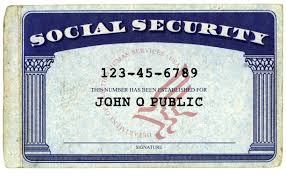 Seriously, dude. We’ve talked about this (in What’s In Your Wallet (That Shouldn’t Be)?). Your Social Security Card, in the wrong hands, is an invitation to identity theft and financial fraud. Memorize your number for when you have to unexpectedly fill in forms. (Really, it’s like a phone number, just nine digits.) Put the actual card in your VIP (very important paper) file system or in your fireproof safe, and only pull it out when you need it.
Seriously, dude. We’ve talked about this (in What’s In Your Wallet (That Shouldn’t Be)?). Your Social Security Card, in the wrong hands, is an invitation to identity theft and financial fraud. Memorize your number for when you have to unexpectedly fill in forms. (Really, it’s like a phone number, just nine digits.) Put the actual card in your VIP (very important paper) file system or in your fireproof safe, and only pull it out when you need it.
Can’t find your Social Security Card? Report it, especially if you think you’ve been the victim of identity theft, and then replace it.
3) Pull your credit report annually.
Yup, we’ve talked about this, too. Over and over and over. The only way to make sure that creditors have properly reported your financial activities, and to ensure that you’re protected against bad guys securing credit in your name, is to check your credit history.
To that end, the federal government mandated the creation of a free joint program among the credit reporting agencies (Experian, Equifax and TransUnion) at AnnualCreditReport.com. Click, answer enough identifying questions about past addresses and financial history to convincingly prove that you are who you say you are, and print (or make a PDF of) your credit report.
And then here’s the thing: read it. Downloading your credit report and not looking at it is like buying exercise videos and not taking the shrink-wrap off the DVDs. It creates clutter in your space, maintains clutter in your life (messy finances, like lumpy physiques), and keeps your future (financial) health insecure. Downloading your credit report and not looking at it is like buying exercise videos and not taking the shrink-wrap off the DVDs.
Remember, your credit report doesn’t automatically include your credit score. You generally have to pay each of the three credit reporting agencies extra for that. But that doesn’t mean you have to pay — DiscoverCard and other credit card companies have started to provide FICO scores (for more on that, check our classic Paper For Your Plastic: Organizing a Better FICO Score) and CreditKarma, a company enabling you to track your credit score over time, is a non-icky consumer option.
4) Look back at 2014.
Did you get married? Divorced? Have a baby? Adopt? Did your own little company shoot through the roof? You’ll be doing lots of paperwork soon to work on your taxes for last year, but don’t forget about setting things up for the coming year.
If you’re employed by someone else, you may be subject to more or fewer withholding exemptions. Sit down with your HR department to figure out how to change your withholdings on your W-4.
If you pay self-employment taxes, be sure to adjust your quarterly estimated taxes accordingly.
5) Balance your portfolio (and not on the top of your head).
The best way to organize your future finances is to be an active participant and know what you’re invested in, in what proportions, and keep tabs as the economy changes the balance of your holdings. Paper Doll isn’t a financial consultant. I read Money and Kiplinger’s and watch the quarterly statements on my investments, and I don’t have a clue about the math on my own.
Sit down with your financial advisor, if you have one, or find a fee-only financial planner through the National Association of Personal Financial Advisors (NAPFA), and find out where your money is: in what companies or mutual funds, in what types of accounts (growth, income, real estate, magic beans, etc.), in what proportions, and create a plan for getting your financial future organized.
6) Create, or add to, your emergency fund.
Experts used to say to keep three-to-six months’ worth of expenses in a liquid emergency fund. (And no, as much as Paper Doll believes diet Coke should be legal tender, this means your money is immediately accessible.) During the recent volatile economic years, that’s been upgraded to eight months.
Not even close? Keep reading for baby steps to help you get there.
7) Create a spending plan.
The word “budget” is about as appealing as the word “diet” — and about as effective. Instead, take a few minutes as your mail comes in each day to jot down what you pay each month, or use a financial dashboard like Mint to track all of your spending and income. Review expenses, including:
- Rent or Mortgage
- Insurance (health, homeowners/renters, auto, etc.)
- Utilities (electricity, gas, cable, internet, land line, cell phone, data plans)
- Child-related (baby sitters, tutors, music lessons, activity fees)
- Home-related (homeowners’ association dues, cleaners, lawn care, exterminators)
- Credit card bills
- Student loan payments
- Other debts (car loans, personal loans, etc.)
- Controllable expenses (groceries, dining out, clothing, personal purchases)
Show up for mail call. Avoiding the truth about your financial situation is like not going to the doctor because you’re afraid of the diagnosis. The sooner you know what’s going on, the quicker things can start improving.
Know your income and your monthly expenses. If the latter seems to outstrip the former, prioritize what can be cut (even temporarily). Knowledge is power.
8) Automate savings. Don’t play games.
Have you heard about the 52 Week Savings Challenge? This got big exposure in 2014 and has been making the rounds again. I’d love to credit the graphic below, but it’s simply been EVERYWHERE for the past year-plus, and nobody’s taken credit.
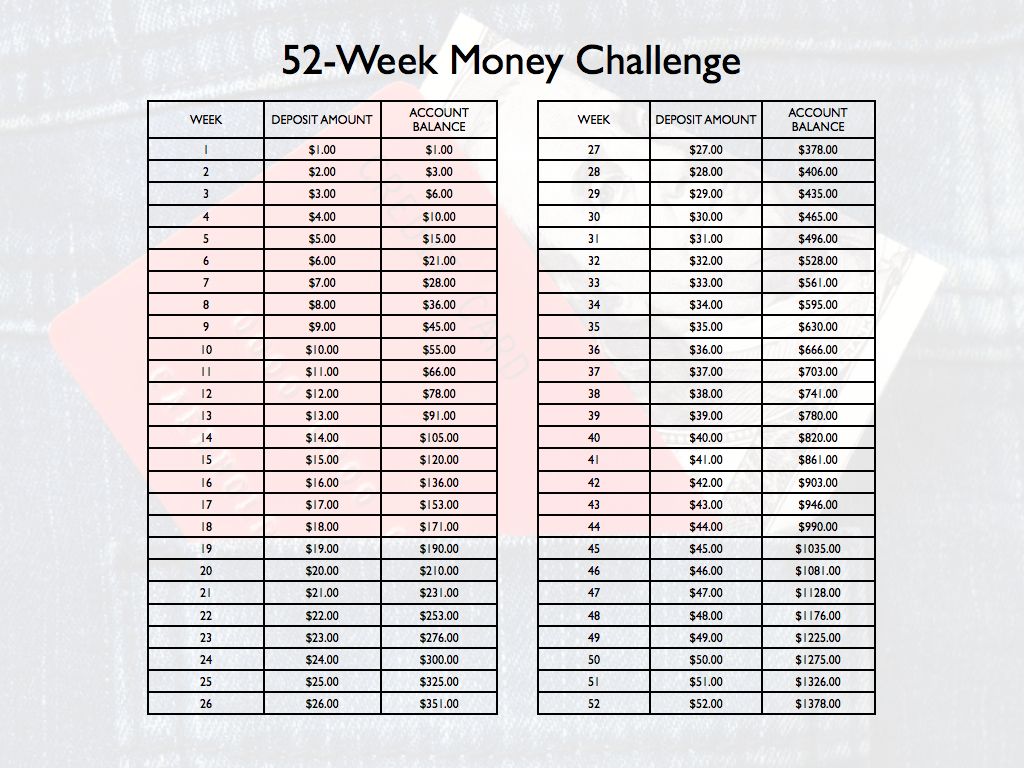 The theory was that each week of the year, you bank one dollar more than the week prior. What’s a dollar? What’s a couple bucks? Keep it up and after 52 weeks, you’ll amass close $1400 (plus interest), almost painlessly. Conceptually, it’s appealing, but I’ve got worries.
The theory was that each week of the year, you bank one dollar more than the week prior. What’s a dollar? What’s a couple bucks? Keep it up and after 52 weeks, you’ll amass close $1400 (plus interest), almost painlessly. Conceptually, it’s appealing, but I’ve got worries.
Let’s start with the plan as written. Sure, $3 is no biggie for most of us. But as you go along and head toward the end of the year, it might be hard to find a loose $47 or $50 every week. From Thanksgiving to the end of the year, alone, that’s $296, and for people who are struggling, that’s a toughie. (For those who increase each week’s savings by $10 instead of $1, the end of the year would be similarly problematic.)
One solution might be to move backward or mix it up. Start at $52 at the start of January, decreasing the amounts each month. Or number scraps of paper 1-52, put them in a jar and pick one out each week to transfer to savings.
A larger problem with the system is that it’s hard to automate transfers with an incremental increase. You probably can’t tell your bank to take $X+1 and transfer that each week. But you know that it’s easier to do something when you don’t need to find motivation to accomplish it.
I think it makes more sense to automate your savings. How much do you want to save this year? Divide by 52, and whether you’re putting away $5 or $500 (lucky you!), set up an automatic transfer through your bank, or consider seeing if your employer will split your direct deposit between two accounts.
9) Identify to what’s expiring when, and what it’ll cost you.
If you’ve completed task #7, you’ve got a handle on regular expenses, but what payments do you make annually, or upon expiration? Don’t be surprised — review last year’s credit card and bank statements and think about past financial annoyances. For example:
- Amazon Prime — Did you get in on the low rate last year before it bumped up?
- Annually renewed gift subscriptions — Do you regularly bestow largesse?
- Discounted services — Did you get a discounted 12-month package from your cable company? Is your low-rate cell contract up?
- Professional expenses — Do you need to renew dues or pay for certifications or licenses?
- Travel costs — Do you need to renew your passport, Global Entry or Trusted Traveler programs, or airport lounge memberships?
10) Don’t guess. Know.
Being organized doesn’t just mean sorting the paperwork or the emails that come every month. It means knowing what you have and where you have it, keeping what works and getting rid of what doesn’t suit your goals.
- Write down everything you spend. (If you never use cash, a financial dashboard may suffice, but you’ll pay more attention to those little drips and drops of funds if you put pen to paper.)
- Balance your checkbook register, even if you haven’t written actual checks in eons.
- Check receipts against your online bank and credit card statements.
- Scan your credit card statements as soon as they arrive, and call to verify anything that looks hinky.
It’s your money, honey. Your finances are like children. Keep them safe, help them grow, and they’ll make sure you have a happy old age.
15 Ways To Get Organized for Get Organized Month 2015
Happy New Year. Now, GO!
Wait, wait, come back! I wasn’t saying to go away. January is National Get Organized Month!
What, you didn’t know that was a thing? According to research published in the Journal of Clinical Psychology, organizing is the second-most popular New Year’s resolution, just after losing weight. And, if you think about it, losing weight involves organizing your body and your health. And if you think some more, organizing your tangible resources, your time and your thoughts are keys to reaching all of your other resolutions, too.
Readers, I’m so excited to be starting another year with you, improving skills, finding tools and creating strategies to make your lives more organized! To ease into this new year, let’s start with 15 tips for 2015!
1) Update your address “book” whether it’s a Snoopy spiral-bound book or the contacts app in the snazzy new smart phone you got for the holidays.
Did you get holiday cards? Check the return addresses on the envelopes and update the information in your own personal database. Consider penciling in “As of 1/15”, or marking an extra field with that date, so you have a sense of how up-to-date your information is. And, if you haven’t done it already, set the cards (and their envelopes) free, as we discussed in Hallmark Holidays and American Greetings: Card Clutter.
Need a little help from your friends? Post a Facebook message to ask people to send you a (private) note if they’ve moved in the last two years and need to update you on their vital info.
2) Forge a commitment — to your planner.
Are you still writing appointments on that extra, orphan “January” page at the back of your 2014 planner? No more! Last week, we covered the basics for selecting the right planner in Pick Your Planner 2015: Paper Doll Rounds Up the (Un)Usual Suspects, so get thee to it!
Do you have an embarrassment of riches, perhaps too many calendars and none which guarantees a full view of your life? Take a peek at our classic post, Lost Time, Dinner With the King of Norway and The Curse of Multiple Calendars.
Commit to whatever system and process you pick. Having a great calendaring system is like having Jeeves as your butler. If you pay Jeeves poorly (i.e., buy a cheap system or kluge together elements that don’t really work) or don’t feed him (and forsake updating your appointments), such neglect will yield one insolent, neglectful butler (or a calendar of conflicts, illegible notes and missing appointments). Plus, the Downton Abbey Butler’s Union will be (politely) pounding at your door!
Finally, before you let go of 2014, take your planner or digital calendar in hand and enjoy a backwards glance through the year with Paper Doll Takes One Last Flip Through the Calendar.
3) Nurture your commitment to your planning system…every day.
If there’s so much going on in your life that you forget to mark appointments in the first place or fail check your planner until it’s too late, upgrade your accountability:
- Set an alarm on your phone to ring at the end of every day, around 5 p.m., to remind you to check your calendar and tickler file for the next day and the coming week.
- If you have an assistant at the office (or a virtual assistant), schedule time each day to meet and review newly-added appointments and obligations.
- Ask loved ones to prompt you by asking, “What’s on your schedule for tomorrow?” at dinnertime.
- Block family time weekly, perhaps on Sundays, to jointly review the coming week. Make sure you’ve cordoned off time for anything important to all of them, individually, or for the family as a whole.
- Schedule your next appointments before leaving anyplace you visit intermittently (doctor, dentist, massage therapist, hair or nail salon, etc.) — but only if you have your calendar with you. If you aren’t traveling with your calendar, ask them to call you the next day (at a time you know you will be available) to set up your next appointment. Never agree to any date without your planner nearby.
4) Get your vital documents in order.
Make 2015 the year you find (or replace) your Social Security Card, renew your dusty passport and finally get a will, a Power of Attorney for financial matters and a health care proxy. Start small, handling one item at a time, and get a handle on what you need by reviewing:
Top 10 Vital Documents–Do You Know Where Your VIPs Are?
More VIPs–Very Important Papers Beyond the Top 10
Are you feeling a little iffy on the basics of VIPs and important documents? You can go back to the classic Paper Doll post, I Fought the Law…And the Paperwork Won!
And once you find everything you need, log where you’ve put them after reading The Ultimate Treasure Map: Creating A Document Inventory.
5) Create a Tax Prep folder.
Tax time is just around the corner, and whether you manage it all with a two-minute EZ form or have a flock of accountants, you’ll need to be ready, so read:
Taxing Conversations: Organizing the Essentials & a New Tax Tool
Taxing Conversations (Part 2): Organizing Fun With Forms
(Actually, what WOULD you call a flock of accountants? Animal group names are so festive. A pride of lions, a kettle of vultures, a crèche of penguins. If you employed a whole mess of accountants, what would they be? A file of CPAs? A form of bookkeepers? Share suggestions below.)
6) Settle your money, honey!
Make a list of all of your credit cards, loans and other debts, as well as their balances and interest rates. Seeing it in black and white in one place is the first step towards taking control of your future. Don’t be afraid to ask for help from a Certified Financial Planner or a Daily Money Manager to figure out the strategies for keeping your bills paid, on time, every time.
Use a good financial dashboard, like Mint or You Need A Budget.
Let 2015 be the year that your money works for you! And watch this space in the coming days for a post on getting your financial basics organized.
7) Give yourself a present.
No, not a holiday present. Give yourself a gift of THE present by letting go of paper from the past that doesn’t fit your life or your needs. You probably have a smart phone or a tablet or a GPS, so let go of crumbling maps cluttering the door pockets of your car. Toss those recipes you’ve been collecting for 20 years and have never once tried. Junk your notes and papers from high school and college unless there’s a senior thesis or lovingly-written comment from a favorite professor. (Even then, consider scanning.)
8) Start thinking about paperless options.
Yes, I’m your Paper Doll, but part of being organized is knowing when digital options work as well, or better, than paper. Love letters? Paper! Operating manuals? Perhaps digital.
Search Paper Doll for the word “paperless” and you’ll be reading until 2016, but at least start with Paperless vs. Less Paper: 6 Ways to Reduce Paper Consumption.
The Tools and Toys blog just published Setting Up and Maintaining a Paperless Home and Office, and last year, the Professional Organizers Blog Carnival had a great, collaborative post on going paperless.
9) Make 2015 the year you safeguard and preserve your photos.
Digital photos mean we can have multiple forms of inexpensive backup without taking up more space in our homes. But what about all the old Kodak snapshots, fading away a bit more every day, even as you read this?
In 2015, Paper Doll will have an ongoing series on organizing photos. We’ll look at how to weed the prints you have and create an organized system for maintaining them. We’ll also look at the options for going forward, whether you choose to scan photos yourself or use a photo scanning service. Either way, find a NAPO member specializing in organizing photos, and visit the Association of Personal Photo Organizers to find professional organizers trained to organize and care for your family’s photographic history.
10) Stop hanging out with floozies.
I stand behind the advice I gave you wayyyyyyy back in October 2007, in one of the first Paper Doll posts ever. Stay Far From Floozies: Avoiding the Loose Paper Trap wasn’t just an admonishment to stop scribbling on every loose piece of paper you find. It’s a whole philosophy about the importance of having a system of behaviors and tools to help you keep your sanity. Use the blog sidebar to search for posts tagged with “notes and notebooks,” including:
5 Key Points for Organizing With Notebooks
Notions on Notebooks: Organize Your Paper Picks
Commit to making this one change and you will be more organized, more productive, and so much happier.
11) Make friends with some great organizing and productivity bloggers.
A million years ago (well, in blogging time), I wrote a post called, Paper Doll Invites You To A Party: Should Auld Acquaintance Be Forgot?. Almost all of those bloggers are still blogging, though if not at those links, they’ve left forwarding URLs so you can keep up with them in their new spaces.
Soon, however, I’ll be sharing an updated post with experts who will help you keep your paper and information (as well as the rest of your life) organized.
12) Let go of subscriptions for magazines and newspapers you don’t read.
Why? Well, because you’re just building mountains of paper clutter. But why else? Mountains of reminders to renew magazines — in your mailbox, in your inbox, and probably in your nightmares. We’ve been talking about magazine clutter for a long time, but even with magazine apps for your phone and tablet, the paper piles keep coming. So, the advice in these posts is still valid:
Mountains of Magazines (And Renewal Cards)
More Mountains of Magazines: Information Clutter Cures
13) Get in the mood!
Remember what I said above, about this being Get Organized Month? That means that there are organizing events all over the country — workshops, presentations, webinars, teleclasses, and more. You are not alone in your experiences with clutter, and you’re not alone in your wish to get and stay more organized and productive.
14) Hire a professional organizer.
I have to admit it: it’s not always about paper. Whether you need to reinvigorate a closet or get your productivity zipping along or downsize Grandma’s house so she can move to Boca, professional organizers can show you the way. We’re not just experts in organizing, but experts in helping you figure out how best to organize for your ways of thinking and living.
Start with the National Association of Professional Organizers (or, for those of you in the land of Hockey Night and Coffee Crisp, Professional Organizers in Canada) to find skilled, caring professional organizers. Specialties range from client types (students, seniors, people with ADHD, attorney’s or doctor’s offices, etc.) to service needs (small business organizing, productivity and time management training, hoarding services) to specific areas (paperwork, computer data, kitchens, closets, attics, etc.). You may also want to consult with our colleagues in the Institute for Challenging Disorganization.
As a Certified Professional Organizer since 2007, and a professional organizer since 2002, I can tell you with pride that my profession is filled with empathetic individuals who will bend over backward (sometimes literally) to help you achieve your organizing and productivity goals and show you how to maintain your progress long-term. Just ask.
15) Cut yourself some slack.
Being organized isn’t a contest. It’s not about whose home looks better, whose papers are more easily accessible or who has the lowest clutter-to-house (or office) ratio. Being organized is about things being easier. More functional. More fun. It’s about having time and space serve you, rather than the other way around.
Happy New Year and Happy Get Organized Month! It’s going to be a great year!
Pick Your Planner 2015: Paper Doll Rounds Up the (Un)Usual Suspects
On the cusp of a new year, it’s time to start entering important dates (birthdays, appointments, meetings, vacations, conferences, National Doughnut Day, etc.) into your planning system. Strictly speaking, a calendar is just a chart showing you the days, weeks and months. A planner is a tool for combining your calendar with your task list and other essential information to make your life more productive.
A few years ago, I offered up a less philosophical, more practical, discussion in Paper Doll Pencils You In On Her Calendar: 6 Tips for Planning 2011, with the most apt advice I could possibly give:
Surprised that people still use paper planners? Canadian professional organizer Clare Kumar explains five reasons why paper planners will never go away. Clare mentions the sensory aspects (you can see more at once, customize the look to appeal to your aesthetic preferences, and make your planner feel good), and notes that you can be grid-independent — the availability of electricity, internet and Wi-Fi are non-essential in the workings of a paper planner.
But it was Clare’s note about the nature of handwriting vs. typing that caught my attention. This year, we’ve discussed, at length, the research indicating that handwriting leads to greater learning and recall. Certainly the point of using a planner is that if you write something down, you can stop thinking of it, per se, and start thinking more robustly and contextually about it. Somehow, dragging an email into Outlook to set a meeting, or typing an appointment into your phone, leads to an out-of-sight, out-of-mind situation for many, but with a tangible paper planner, every time you eyeball your month or your week, you are speedily, comfortingly reminded of the important aspects your life.
Of course, knowing that you want a paper planner is only the beginning. You still have to know the style that’s right for you, and then there are a myriad number of options from which to choose.
RING-BOUND
While there have always been calendars, planners are a relative modern invention from the 1980’s onward. The Yuppies had their Filofaxes, DayRunners and Franklin Planners. (Disclosure: Paper Doll still uses a Franklin Planner: Classic size, Seasons theme, two-page-a-day version.)
Ring-bound planners have heft — it’s a binder, with pages for monthly, weekly and daily planning. That heft has always meant lots of options — you can pick-and-choose the elements of your planner — but your choices were generally confined to the binder size to which you’d already committed. I can switch to the Franklin Planner Monticello theme or the anniversary edition “Original” in a berry pink that matches the branding of my website, blog and business cards, but I still have to stick with the “Classic” sized planner unless I want to start from scratch.
I direct you to Ana Reinert of The Well-Appointed Desk and her recent six-part series, A Beginner’s Dive Into Ring-Bound Planners:
Ana may consider it a beginner’s dive, but by the time you reach the deep end, you’ll have explored all of the oceans of ring-bound planners.
BOOK-BOUND
Book-style planners require serious commitment. There’s generally no customizing, you have to start anew each year, and if your wealth of ideas (and scribblings) exceed the number of available pages, you’re out of luck. However, the features available in many of the modern book-style planners are creative as well as practical, making options possibly outweigh lack of expandability. Three recent alternatives worth considering include:
Evernote Weekly Planner by Moleskine
The Evernote Weekly Planner by Moleskine has a lot in common with its cousin, a notebook we discussed at length in An Organized Hybrid: The Evernote Smart Notebook By Moleskine. This 5″ x 8 1/4″, 144-page, dot-ruled planner is designed so that you can enter information by hand and use your iOS Evernote Camera app to snap a picture of a planner page, categorize the information (with the help of special, colorful “smart stickers” to tag your notes), and sync in Evernote, across all your devices. The hard cover binding has a custom Evernote design, and the interior rear cover has a paper pocket for storing loose items, like business cards or receipts.
Evernote is able to recognize your handwriting, so you can search within captured photos for specific text you’ve entered by hand. You can even check a box in the upper right corner of any particular date on a calendar page, and Evernote will flag that day as a reminder.
The Evernote Weekly Planner by Moleskine runs $34.95, and you get three months of free Evernote Premium included with the purchase.
Passion Planner bills itself as “An appointment calendar, goal setting guide, journal, sketchbook, gratitude log & personal and work to-do lists all in one notebook.“ Whew.
The black, book-bound, soft-cover binding comes in two sizes: 8 1/2″ x 11″ and 5 1/2″ x 8 1/2″. The Passion Planner has a traditional weekly layout, with seven columns for each day of the week, broken down by appointment slots, but fits in a lot of extra space for other areas of life.
But beyond this, of the Passion Planner’s 190 pages, there are annual and monthly overview calendars, a goal-setting guide to aid brainstorming for lifetime, 3-year, 1-year, and one-month goals, and monthly check-in “reflection questions” to gauge progress, consider gratitude and create steps for improvement. There are also 20 additional blank pages and gridded pages for free writing and drawing.
You can see the 2015 Passion Planner in action, page by page. This successful Kickstarter project can be purchased for $30-$40, depending on size, at the Passion Planner site.
Also, if you’re not ready to commit to the Passion Planner, itself, you can print some sample pages to use for free.
Spark Notebook, a Kickstarter project that raised ten times its initial goal, is almost the flip-side of the Passion Planner. If the latter is for right-brained, creative types, Spark Notebook is more for the linear, left-brained among us.
Instead of mind-maps, there are grids and lists, (undated) monthly and weekly goal, project planning and meeting notes pages, 30-day challenges, weekly overviews for time-blocking tasks, lined pages for note-taking, and even perforated blank pages for sharing notes with others. (Of course, this is where a snap with your phone would make more sense.)
You can click to peek inside the Spark Notebook and see page-by-page of how the 5 3/4″ x 8 1/4″ planner works. The planner is 216 acid-free pages with a lay-flat binding, and was priced at $28/each during the Kickstarter campaign.
WIRE-BOUND
Wire-bound planners generally use twin-loop wire binding and flexible covers, and are meant to be used for one calendar year and then replaced; any information that needs to be maintained must be hand-copied to the next year’s planner. However, they’re less expensive than binder alternatives and far more lightweight.
Beyond that, because wire-bound planners are minimally customizable, they sometimes have a reputation as tame and impersonal. Book-bound planners are often seen as elegant; ring-bound planners may be sophisticated or sassy, depending on customization. But wire-bound planners tend to remind most people of dentist-office receptionist’s calendars.
Of course, that needn’t be the case. Even when you’re talking about the grand-daddy of wire-bound paper planners, Mead’s At-A-Glance, precision doesn’t have to be boring:
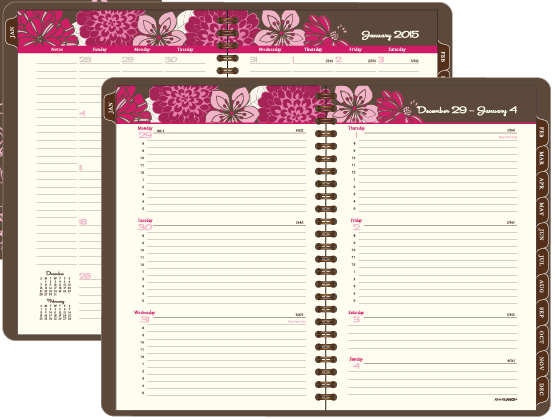 Of course, whether you’re looking at name-brand, store-brand or generic planners, the thing to note about most wire-bound planners is that they tend to be for planning appointments and fixed-date events, and less about setting goals, brainstorming projects or doing complex, long-range planning. One exception is the surprisingly little-known, but nonetheless fiercely loved, funnel-based Planner Pads, with space for categorizing project specifics, prioritizing daily activities and scheduling time- and date-specific appointments.
Of course, whether you’re looking at name-brand, store-brand or generic planners, the thing to note about most wire-bound planners is that they tend to be for planning appointments and fixed-date events, and less about setting goals, brainstorming projects or doing complex, long-range planning. One exception is the surprisingly little-known, but nonetheless fiercely loved, funnel-based Planner Pads, with space for categorizing project specifics, prioritizing daily activities and scheduling time- and date-specific appointments.
And, if your recollection of Planner Pads is that they are, like most wire-bound planners, fairly black-and-white (literally and figuratively), check out their recent upgrade to brightly colored, seasonal themed planners.
DO-IT-YOURSELF
Not everyone is satisfied with a single-universe planner. When I asked my Twitter followers, I was surprised to find how many people, like Unclutterer‘s Erin Doland, were creating their own planners, mixing and matching formats from different environments.
@ProfOrganizer Staples Arc and the Emergent Task Planner for my daily goal setting
— Erin Doland (@erdoland) December 11, 2014
Many DIY-ers like Erin are customizing notebooks to fit their unique needs and styles. Ring-bound planner users have a variety of free options available on the web, like PrintablePlanners.net‘s seven sizes of page additions (Executive, Desktop, Travel, Personal, Pocket, Hipster, Mini), with basic monthly, weekly, daily, project and task planning pages, as well as journals, spending logs, Cornell Note-taking pages, and more.
Lately, one of the more common way to adapt a planner is to use a customizable notebook, where you select the cover pieces, page elements and accessories, and join them together with discs that hold the specially-punched paper and elements together, or otherwise employ a unique binding system.
The high-end of the scale would be something like the Levenger Circa System, but we’ve also covered more affordable options in past posts, including:
- NAPO Expo 2012 Recap (Part 1) — Paper Lovers’ Dreams Come True (Staples’ Arc System)
- Customizable Notebooks: Have It Your Way…Sorta (YoonCo’s Sorta)
- Presto, Change-o! NAPO Expo 2013 Shape-shifting Organizing Products #3: Ampad Versa Crossover (Ampad Versa Crossover)
With the cover and binding options in place, you can choose in-system elements, like daily/weekly/monthly calendar pages, project planner refill pages, blank (lined or graph) paper, and so on. Alternatively, you might pick solutions from outside your planner’s universe. Erin, for example, uses the Emergent Task Planner from David Seah’s impressive array of productivity tools.
D*I*Y* Planner also has a huge compendium of template elements for use in ring-bound and disc-bound planners. You may also want to review MakeUseOf‘s recent article, 7 Single-Page Productivity Planners To Organize Your To-Do List for more planning element solutions to add to your calendar/planner. And, of course, any planner page or element created for one format can generally be used for the other with the help of a format-specific hole-punch.
YOUR IDEAL PLANNER
In the end, the best planner for you is the one you’ll pick up, carry with you, and use all the time, day-in and day-out. Only you know whether you need bright colors and mind-mapping pages or serious tones and refined lists. Leather, faux-leather or Hello Kitty pink plastic? Un-dated calendars and blank pages or dated calendars with pre-created themes and prompting language? One universe or a blending of many?
If you use a paper planner, feel free to share in the comments and let us know what works for you. And however you plan your 2015, may it be a happy and healthy one!
Last-Minute Holiday Gifts: Clutter-Free Delights
No matter how invested you have (or haven’t) been in the holiday shopping season, you may find you’re still behind schedule and seeking some inspiration. Luckily, you’ve come to the right place, as Paper Doll HQ has corralled some final holiday gift suggestions.
GIFTS OF EXPERIENCES
The best gifts are those that your recipients want, or would want if they knew that such a thing existed. As we’ve discussed previously, I’m hugely in favor of gifts of experiences, those that delight, and those which help us deal with the requirements of life than are less delightful. As I noted last week, a good first start are the experiential presents at my classic Holiday Gift List: Favorite Things Edition. Speaking of which, I’d previously suggested for this category:
Gifts of Adventure — For the thrill-lovers on your list, consider certificates for hot-air balloon rides, rock climbing or zip lines. Race fans might love the NASCAR Racing Experience or the Dale Jarrett Racing Adventure. Athletes will appreciate a week of baseball fantasy camp, pre-paid rounds of golf, or time in the batting cages. For the more casual (and loosely defined) adventurer, bowling, miniature golf, or paintball work equally well.
To these gifts of adventure, I add a new experiential form of adventure and entertainment. A friend who recently visited New York City attended Escape the Room, billed as a “fun, interactive game…While it looks like any other ordinary room, it’s actually a mystery puzzle. Find the hidden objects, figure out the clues and solve the puzzles to earn your freedom and “Escape the Room.” You have 60 minutes, so be quick!”
Not in the Big Apple? The puzzle-busting “Real-life Room Escape” concept is spreading across the country is different guises, from Adventure Rooms in New Jersey and Connecticut to the Real Escape Game in Las Vegas to Escape Experience Chattanooga. Most pricing seems to be about $28-$40/person.
Want more experiential ideas? Fellow Certified Professional Organizer® Bonnie Joy Dewkett, the Joyful Organizer, has come up with a free Clutter-Free Gifts Printable to help you and your fellow worn out, listless giftors come up with new gifting solutions. Karate lessons aren’t your giftee’s style? What about magic lessons?
Still not enough? Take a peek at Getting Organized Magazine‘s 72 Clutter-Free Gift Ideas, divided by categories and chock-full of nifty notions!
GIFTS OF CONSUMABLES
Want a different kind of gift that avoids clutter, but still satisfies? How about consumables, whether fresh-baked goods from your own kitchen or from a local eatery, like my pastry-chef friend Jennifer Hooper’s Chattanooga-based Sweet Eats? (Crispy Mini-Gingy? Yes, please!)
Want something that requires a little less physical effort on your end (so, less washing up or schlepping to the bakery) and more pizzazz? Or maybe you’re concerned about making sure your loved ones are getting something good, but also good for them?
Graze is your opportunity to give personalized, healthy (but not icky-healthy), portion-controlled snacks. Buy a gift voucher, and then your giftee gets to set up an account detailing all of his or her likes and dislikes for snack types, and then the boxes start arriving.
The Nibble Box provides maximum variety. Graze staffers review each person’s preference list and then send anything from chocolate-coated nibbles, to nuts, seeds, and dried fruits, to dips and dippers, crackers and snack bars, selected from 90 different options.
The Calorie Counter Box contains options selected from up to 50 ingredient types to create packages of 150-calorie snacks.
Your recipient can choose to send the Graze boxes to home or work.
Interested in this for yourself? Graze boxes are $6.99 each, delivery is free, and come once a week or every other week. For more information, check out Graze’s FAQ.
For something less snack-oriented, consider one of the nationwide upscale meal-in-a-box services, like Blue Apron, Plated or Hello Fresh. (There are also regional services, like Peach Dish in Atlanta and Home Chef in Chicago.) These services deliver correctly proportioned fresh ingredients and instructions for making a magical meal.
Of course, if your giftee isn’t much of a cook (like Paper Doll), a gift certificate for the services of a personal chef can be surprisingly affordable!
GIFTS FROM THE HEART
Sometimes, the best gift isn’t just a thing or an experience. Author Leo Babauta recently put together an amazing blog post detailing gifts that are (generally) low on cost and high on creativity. To do justice, please read The Zen Habits Holiday Gift Guide in its entirety, but I had to share some of my favorite ways Babauta lists to do something truly special for the people in your life:
- Create a personal website for someone, complete with photo montage, if you’re good at web stuff.
- Find a board game at Goodwill and customize it for the person’s personality.
- Make a treasure hunt for them.
- Help them realize their dreams.
- Do a challenge with them.
- Take a class together (community classes are often free or cheap).
- Create a video from family/friends with everyone sharing what they love about the person.
The key to all of Babauta’s gifts? Taking time and thought to consider the person’s hopes, dreams and needs, and using your abilities to help them reach those sparkly stars.
Of course, in an ideal world, not all of our gifts (or our focus) would be spent solely on those we know. Author Laura Vanderkam‘s recent article in Fast Company posited that we should Forget the Gift Cards, Try 12 Days of Microphilanthropy Instead. Vanderkam comes up with ideas that allow you to give of yourself (and your expertise) one-on-one, and give of your wealth (however meager or robust) to those less fortunate. My favorite of her suggestions?
 ModestNeeds.org is a twelve-year-old non-profit that aims to “…responsibly provide short-term financial assistance to individuals and families in temporary crisis who, because they are working and live just above the poverty level, are ineligible for most types of conventional social assistance…“
ModestNeeds.org is a twelve-year-old non-profit that aims to “…responsibly provide short-term financial assistance to individuals and families in temporary crisis who, because they are working and live just above the poverty level, are ineligible for most types of conventional social assistance…“
Applicants and the facts of their situations are vetted by ModestNeeds.org before their cases are presented for donors to consider.
GIFTS OF ORGANIZATION & PRODUCTIVITY
The gift of organization is one that keeps on giving. Has someone in your life expressed an interest in getting more organized? Are you feeling magnanimous? Help your loved ones find a professional organizer through the National Association of Professional Organizers‘ searchable online directory and offer to pay for a session to help get them closer to their organizing goals.
For a more modest present, give a gift subscription to Getting Organized Magazine for four quarterly issues full of great advice on developing the skills and systems for getting organized. For print issues, it’s $19.50/year (or $29.50/year, internationally), or $13.50/year for a truly clutter-free digital subscription. (For new subscriptions, use the coupon code GetOrgJan15 for 20% off if you’re ordering by January 31, 2015.) [Editor’s Note: Getting Organized Magazine is now a digital-only resource, but it’s still worth checking out for more clutter-free and decluttering ideas.]
COOL STUFF FOR WRITERS, TINKERERS AND READERS
Have an inveterate letter-writer on your gift list (or are you trying to encourage a child to write thank you notes)? For $14.95 plus shipping, you can help keep the clutter of unevenly-written and scribbled envelopes at bay with The Lettermate.
(Hat tip to blogger Patrick Rhone of The Cramped for finding this nifty option.)
Got a tinkerer on your list, one who is always leaving bits and pieces of repaired eyeglasses or gadgets all over the place? The Magnetic Project Mat from iFixit is an 8″ x 10″ mat with non-slip foam backing and a dry-erase surface for note-taking ($19.95).
If you’ve got readers in your life, you know that it’s OK not to know their preferences: there’s always an Amazon or Barnes & Nobel wish list — or gift card — to help you out. Of course, if you were intrigued by my post, Netflix-esque Subscriptions for Books: Oyster, Scribd and Entitle, earlier this year, you might want to buy a gift subscription for Scribd (three months for $25, six months for $50 or a year for $100) or an Oyster subscription (customizable pricing for up to 24 months, with pre-set gift pricing at $9.95/month, $29.85 for three months, $59.70 for six months and $119.40 for a year). Entitle lets you select your preferred gift amounts, with fixed-month pricing running about the same as Oyster.
Finally, if there’s someone in your life for whom you’re in still doubt about their wants or needs, chances are good that they’ll appreciate the gentle, goofy humor of this collection, The Little World of Liz Climo.
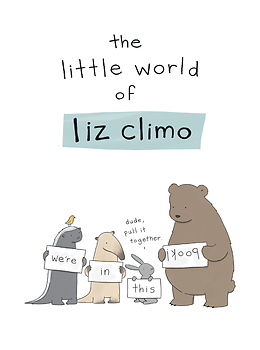 Check out Climo’s work at her Tumblr page, and no matter how harried the holidays have made you, Paper Doll believes Climo will put a smile on your face.
Check out Climo’s work at her Tumblr page, and no matter how harried the holidays have made you, Paper Doll believes Climo will put a smile on your face.
Happy holidays!

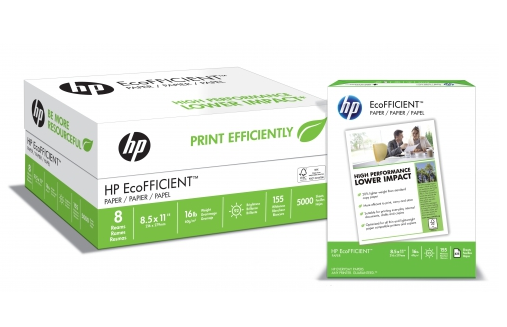
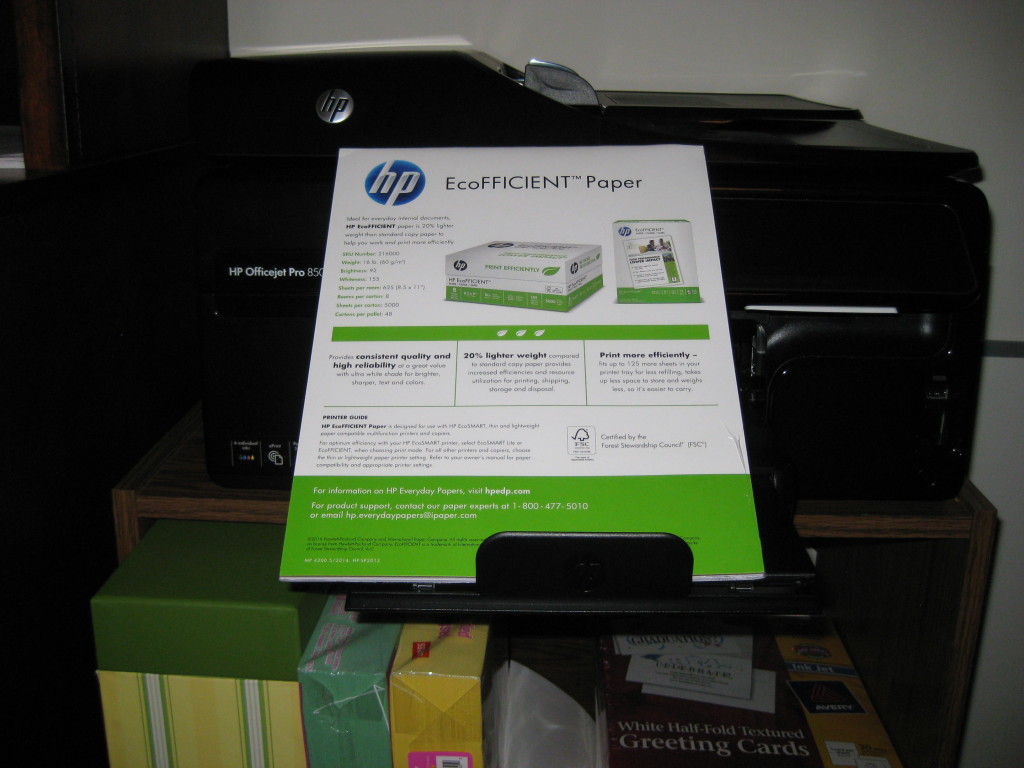
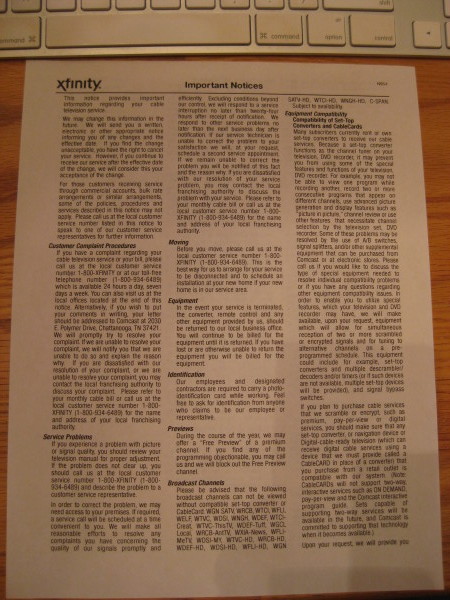
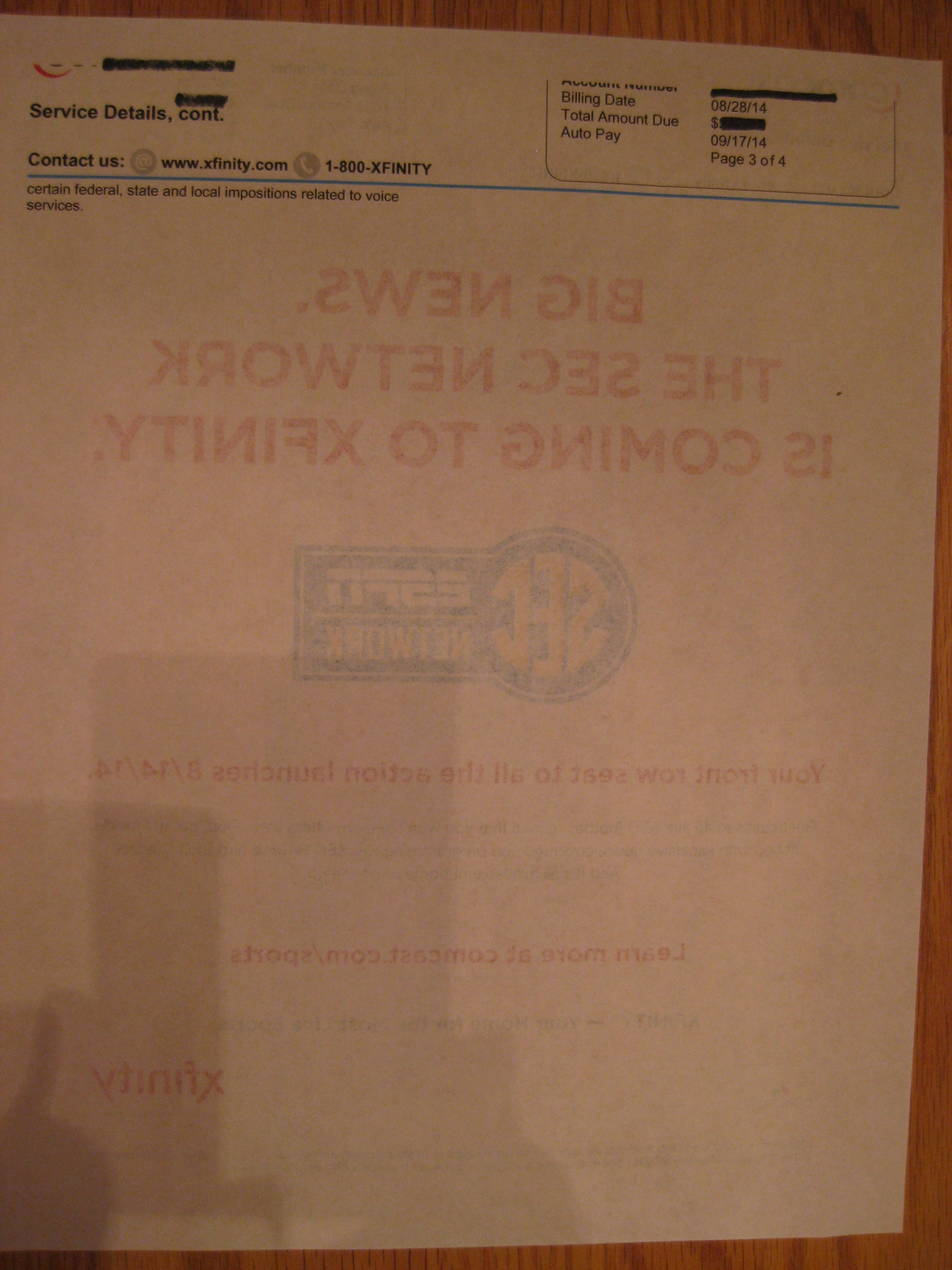

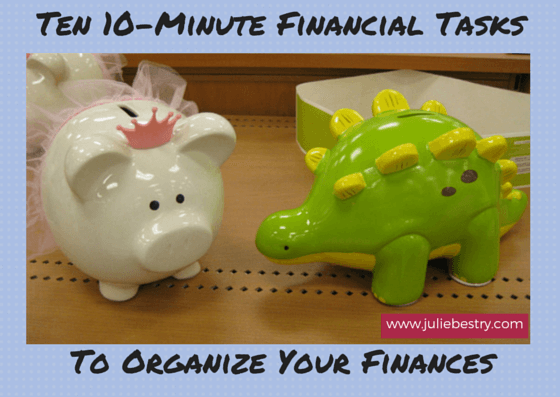






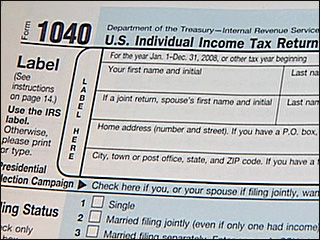

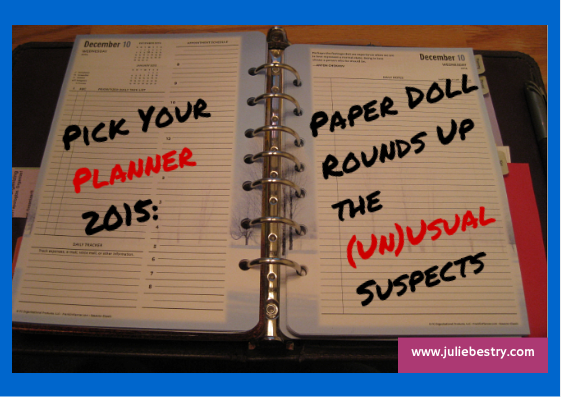
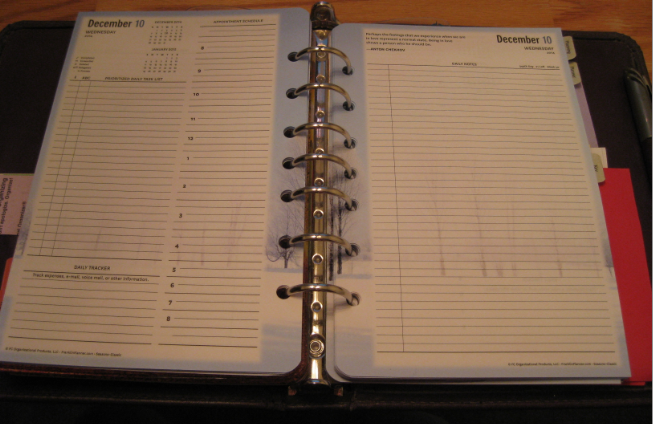

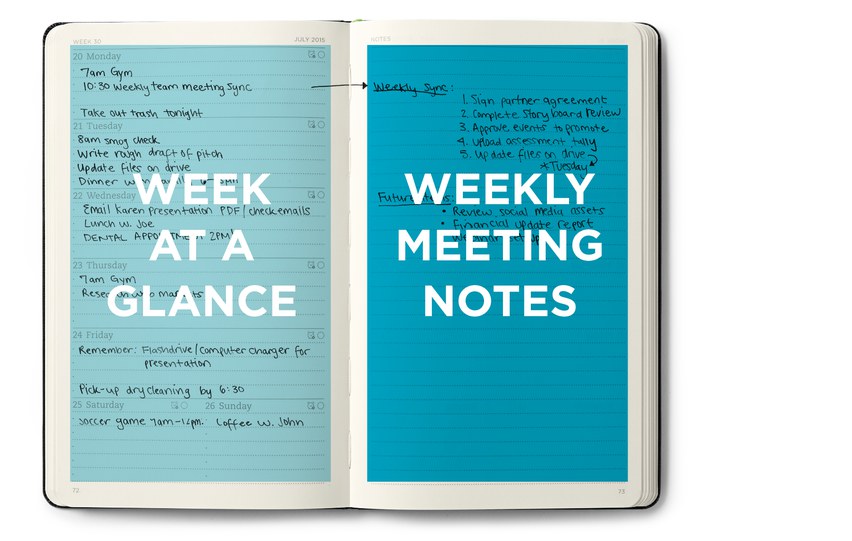
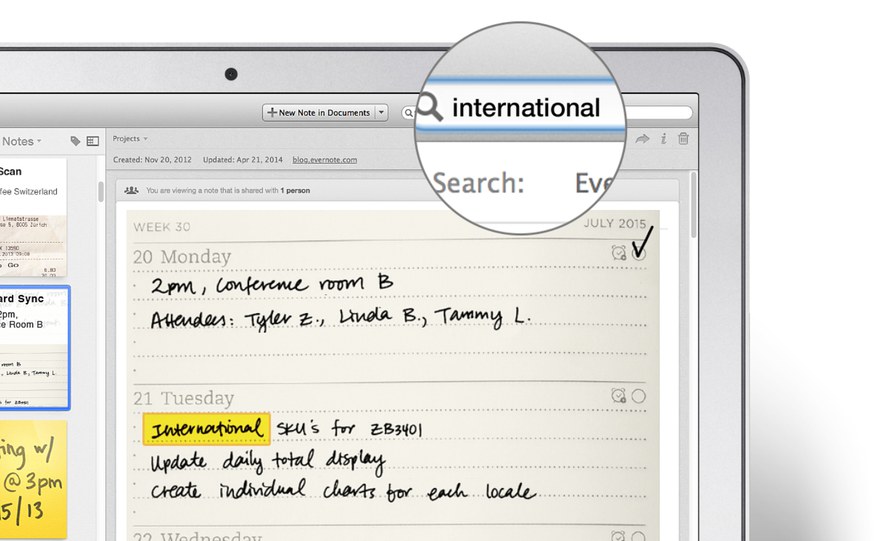
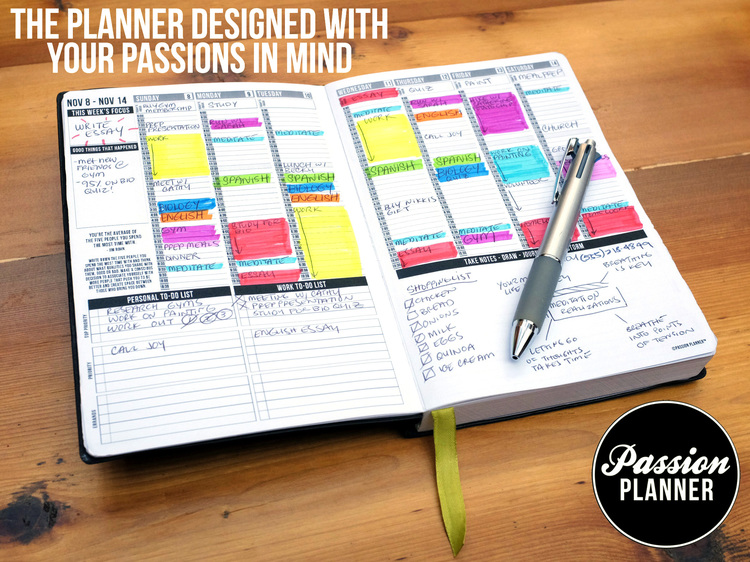
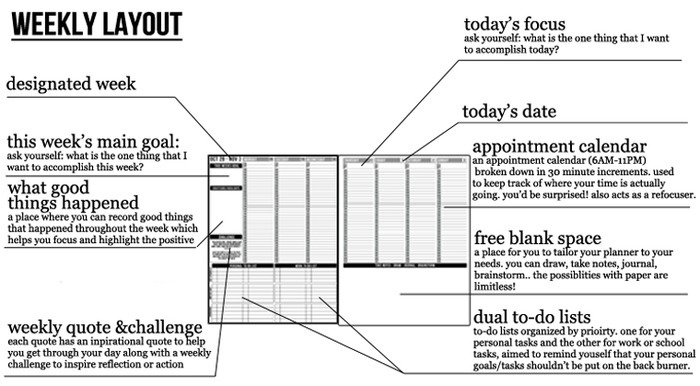
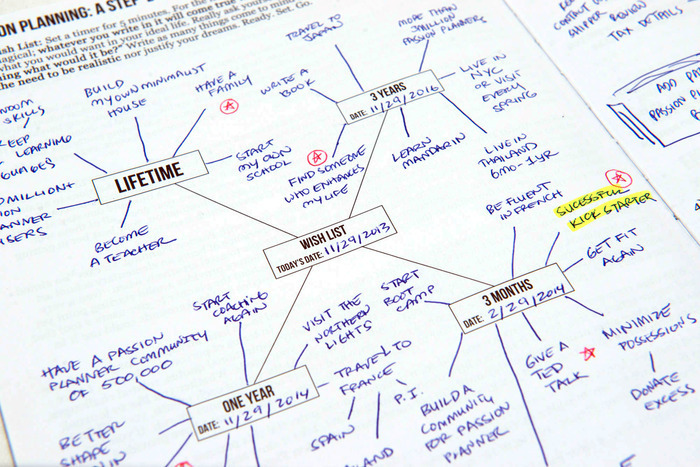
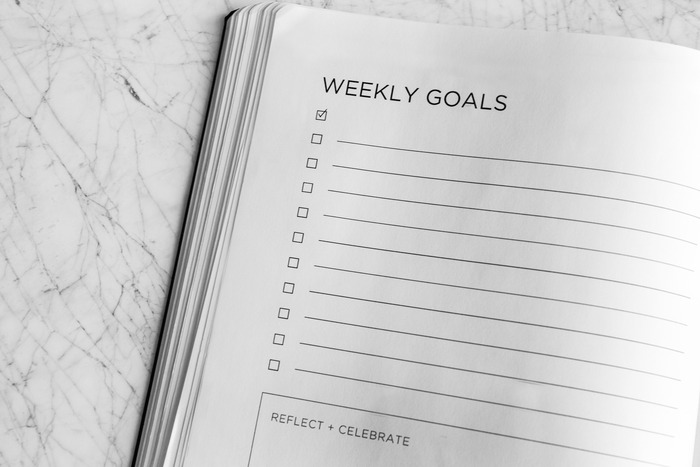
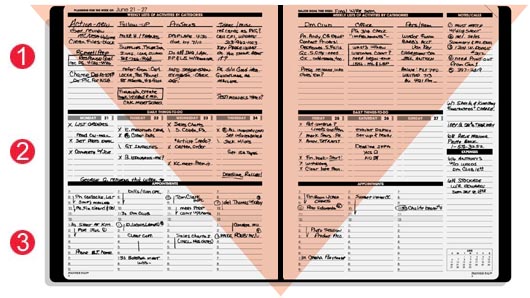
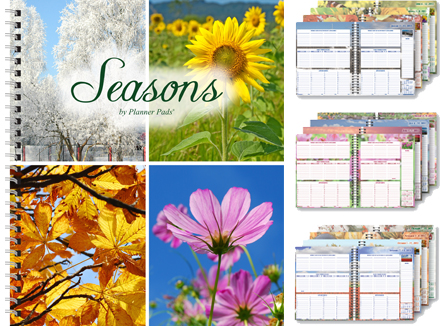
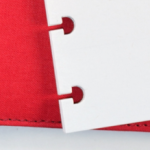
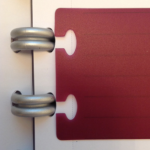
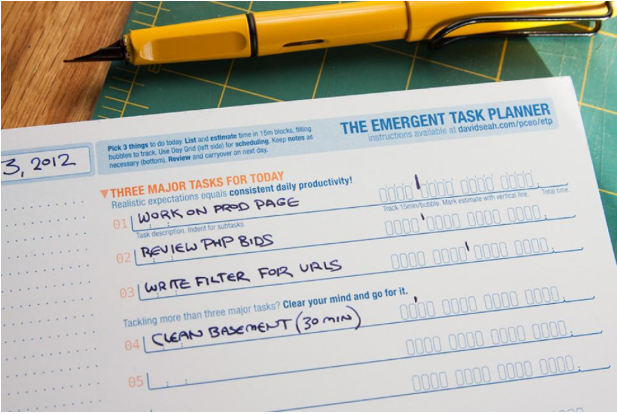



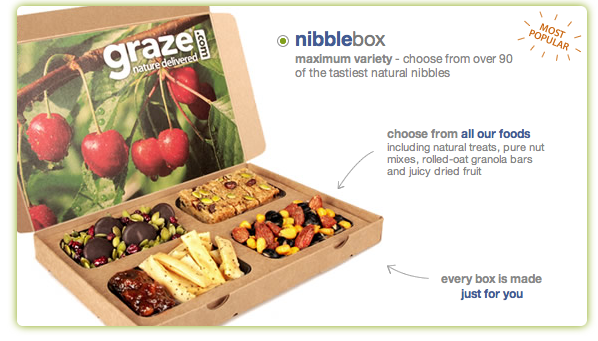
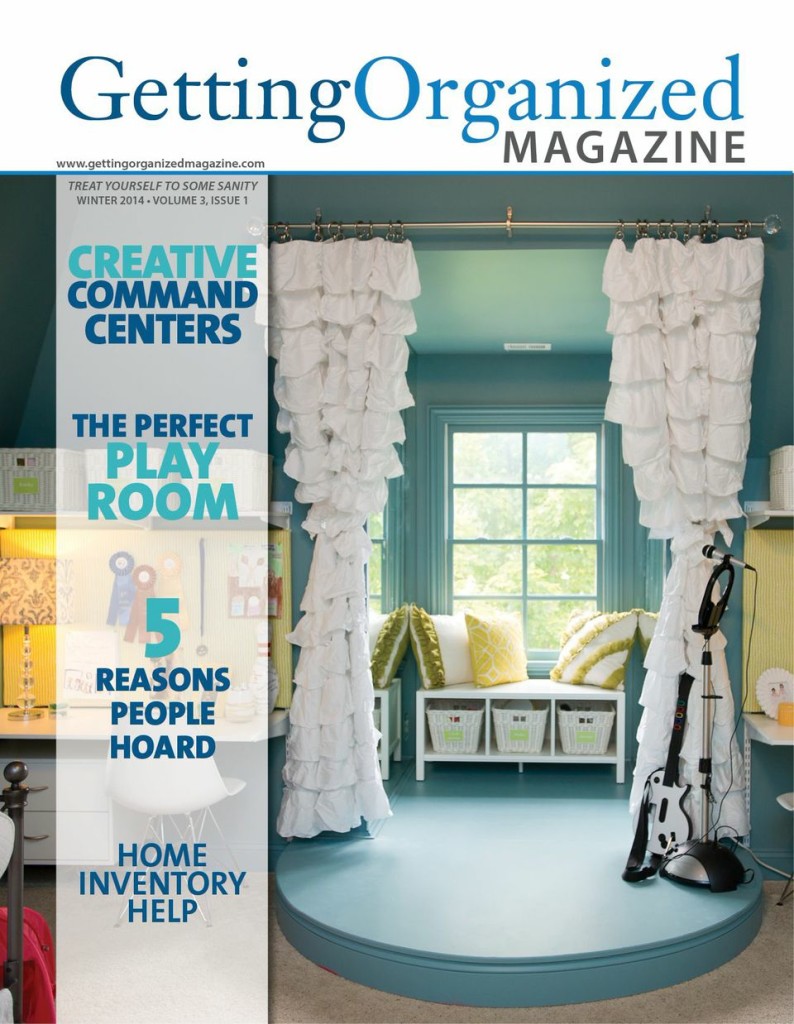



Follow Me